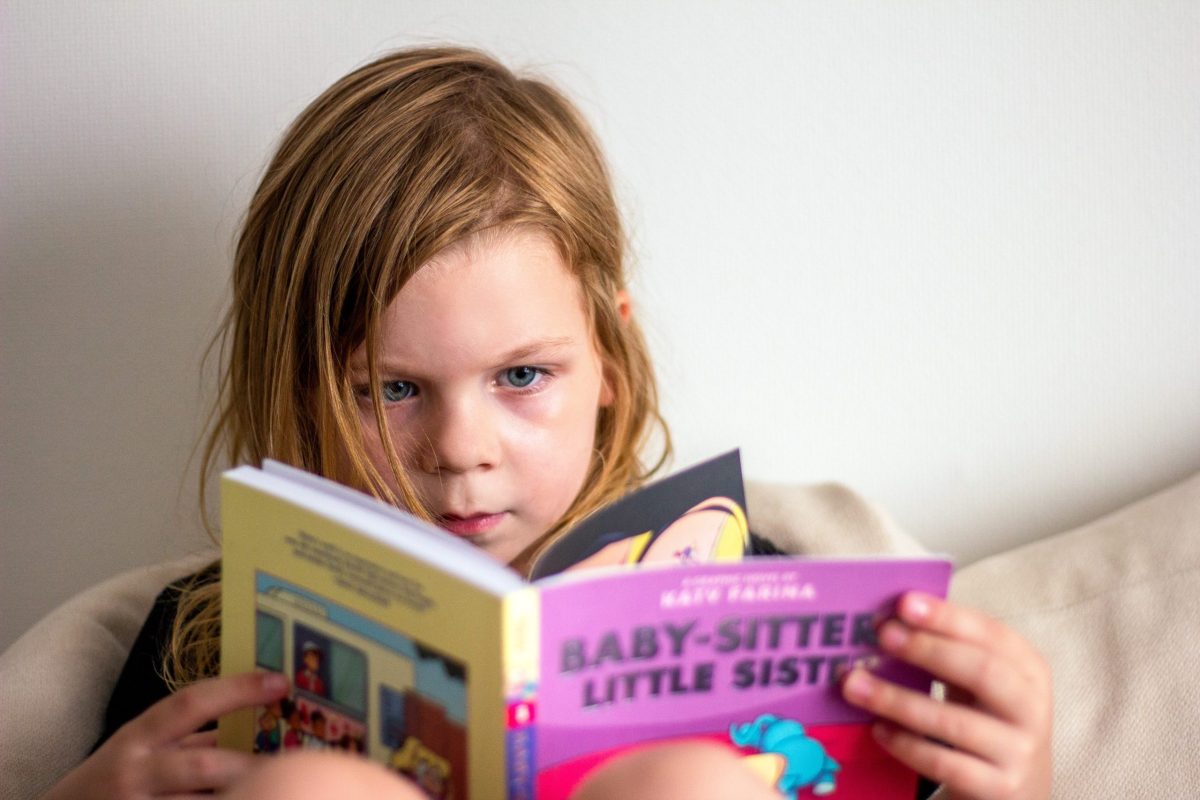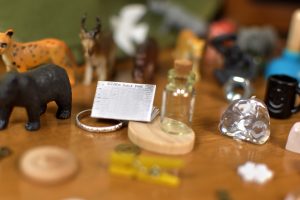Montessori Reading Levels
For most people reading the words on this webpage, reading comes naturally. As you read this, you likely don’t need to spend time studying each letter, sounding it out, and eventually forming the words. While it may come easily to you now, learning to read is a long process for children. It’s not as simple as learning the alphabet and picking up a book. Montessori reading levels offer a step-by-step framework for parents and educators to help children progress from recognizing sounds to eventually reading independently.
In this article, we’ll detail (1) the foundation that children need to build before they can learn how to read, (2) explore the Pink, Blue, and Green Series, and (3) discuss how families can adapt these principles to their unique needs.

The Foundation Of Montessori Reading Levels
Montessori reading levels start long before a child begins to read. In a Montessori environment, learning to read is like climbing a ladder with many rungs. The child spends years gradually climbing this ladder as they master foundational skills, each building on the previous one, that lead to reading.
 The Montessori method advocates for adults to expose children to rich language from an early age. From birth — and possibly even from pregnancy — parents can prepare their children for reading by using rich language. Books, songs, poetry, and daily conversation all help build a child’s vocabulary and prepare them to read.
The Montessori method advocates for adults to expose children to rich language from an early age. From birth — and possibly even from pregnancy — parents can prepare their children for reading by using rich language. Books, songs, poetry, and daily conversation all help build a child’s vocabulary and prepare them to read.
When a child is between 2.5 and 3, depending on readiness, they can begin to work through the sequence of language lessons. The sequence starts with games that help children classify objects and recognize sounds. Once children can identify sounds, they learn the corresponding letters through the sandpaper letters. Once the letters are mastered, children begin stringing words and sentences together with the movable alphabet.
In Montessori, children learn to write before they learn to read. Once children begin to write in earnest, according to Montessori for Today, they are also beginning to read.
A Note On Montessori Reading Levels and Language Curriculum
Montessori language curriculum will likely vary from school to school and from home to home. Since Maria Montessori spoke Italian, a phonetic language, she didn’t develop a full curriculum to deal with the complexities of the English language. It’s important for Montessori families and educators to be flexible and find the materials that best meet the children’s needs.
The Pink, Blue, And Green Series
In the U.S., the Pink, Blue, and Green Series is the most common approach to teaching reading and writing in Montessori classrooms. According to Montessori for Everyone, educators developed the Pink, Blue, and Green series to better adapt Montessori language curriculum to English-speaking children.
 To understand the place of the Pink, Blue, and Green series, it’s important to understand the difference between Italian and English. In Italian, reading is straightforward once children know the letters and their corresponding sounds. For example, reading the Italian word for telephone — “telefono” — is as simple as sounding out each letter. However, English is a bit less predictable. No amount of practice with letter sounds and sandpaper letters can teach a child that, in some cases, “p” teams up with “h” to make the sound /f/, like in “phone.”
To understand the place of the Pink, Blue, and Green series, it’s important to understand the difference between Italian and English. In Italian, reading is straightforward once children know the letters and their corresponding sounds. For example, reading the Italian word for telephone — “telefono” — is as simple as sounding out each letter. However, English is a bit less predictable. No amount of practice with letter sounds and sandpaper letters can teach a child that, in some cases, “p” teams up with “h” to make the sound /f/, like in “phone.”
That’s where the Pink, Blue, and Green series comes in. It helps English-speaking children learn the letters and letter combinations that make up the various (and sometimes confusing!) sounds of the English language. Children start with the pink series, the most simple, and then progress to the blue and eventually green series.
Here’s a breakdown of the words taught in these Montessori reading levels:
The Pink Series
The pink series teaches children the basics of reading in English. It focuses on three-letter, phonetic CVC (consonant, vowel, consonant) words. Examples of pink series words include “fox,” “cat,” “bug,” and “hen.”
The Blue Series
The blue series introduces children to words with blends. Make, Take & Teach describes consonant blends as “when two or more consonants are blended together but each sound may be heard in the blend.” Examples of blue series words include “crib,” “brush,” and “clap.”
The Green Series
The green series introduces children to words with phonograms. Unlike blends, in which you can hear the sound of each letter, phonograms are letter combinations that create a new sound. Montessori classrooms first introduce these 16 phonograms with green sandpaper letters, as detailed by Baan Dek Montessori. The phonograms include “ee,” “oa,” “ai,” “oy,” and “th.” Examples of green series words include “cheek,” “boat,” and “mail.”
Teaching The Pink, Blue, And Green Series
Montessori educators and parents typically use materials stored in small boxes to teach the words of each series. The boxes contain a combination of Montessori language miniatures, printed images, paper with written words, and other materials. The boxes increase in difficulty as a child’s skills progress.
 For example, the first pink box contains six Montessori language miniatures. The directress presents each language object and encourages the child to identify the sounds that make up the word and find the corresponding letters from the movable alphabet. The second box repeats the exercise, except with printed images rather than language miniatures. By the end of the series, the child can independently read unfamiliar words of that series.
For example, the first pink box contains six Montessori language miniatures. The directress presents each language object and encourages the child to identify the sounds that make up the word and find the corresponding letters from the movable alphabet. The second box repeats the exercise, except with printed images rather than language miniatures. By the end of the series, the child can independently read unfamiliar words of that series.
For additional resources on teaching the Pink, Blue, and Green Series, the Wikisori pages for the series have a great breakdown of each box, what it contains, and how the directress presents it. For visual learners, Stella Ling’s YouTube videos are a thorough demonstration of the presentation of each box. Montessori for Everyone has a helpful word list for Pink, Green, and Blue series objects. Sugar, Spice and Glitter has a DIY tutorial for pink series language object boxes. Finally, we highly recommend our Montessori reading book series “1, 2, 3.”
Adapting Montessori Reading Levels
The direction above may provide a helpful framework as you progress through Montessori reading levels with your children or students. However, you don’t need to rigidly follow the rules of each box. Now that you know how the series generally work, you can adapt how you present them based on the needs of the child, your budget, the materials you own, and the amount of time you have available.
Additionally, it’s important to keep in mind that the Pink, Blue, and Green series is not the only way to teach language in a Montessori environment. It’s a great option to use if it works for your family. But if another method works best for your child, don’t be afraid to use it. As always, there’s no one-size-fits-all approach when it comes to Montessori and parenting, and you don’t need to do things perfectly to educate your child the Montessori way.




0 Comments